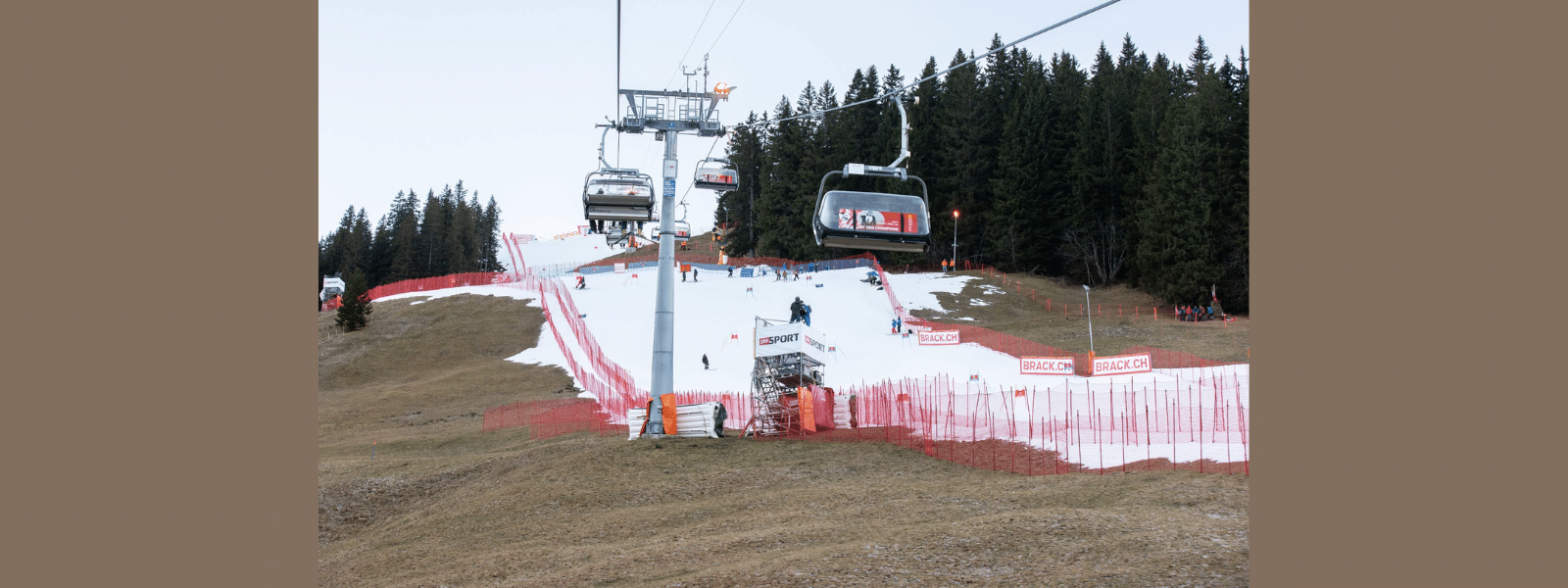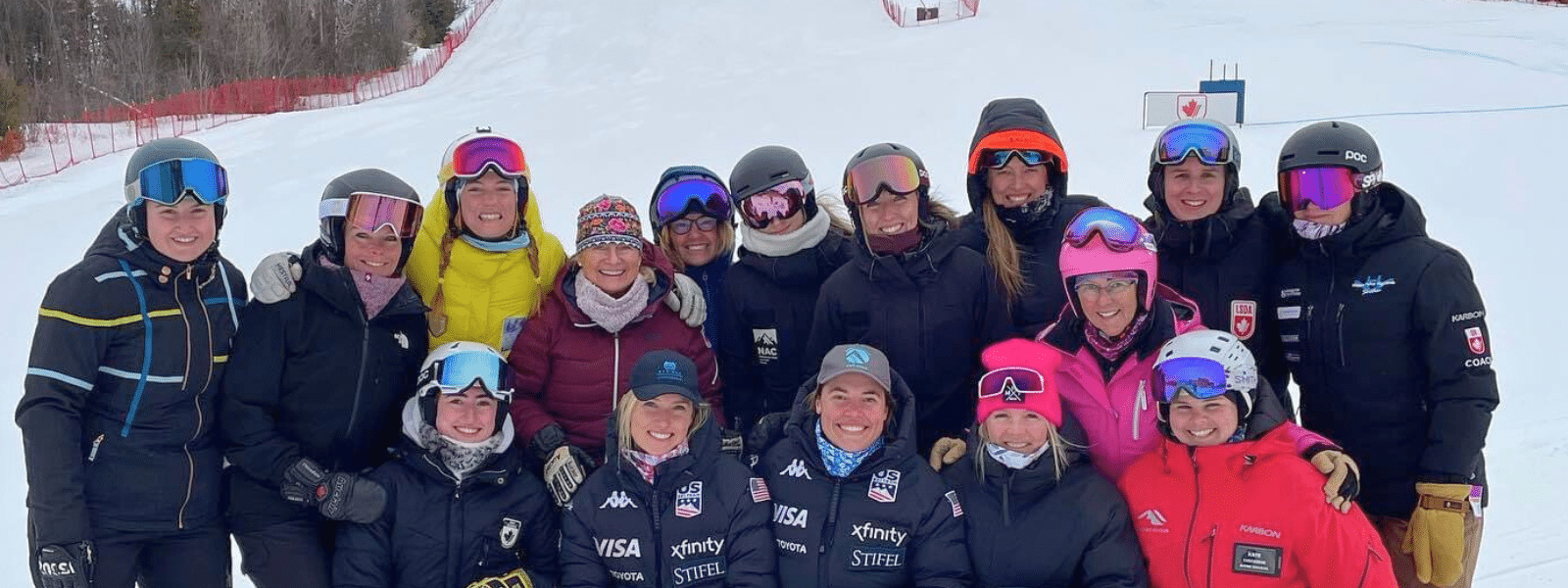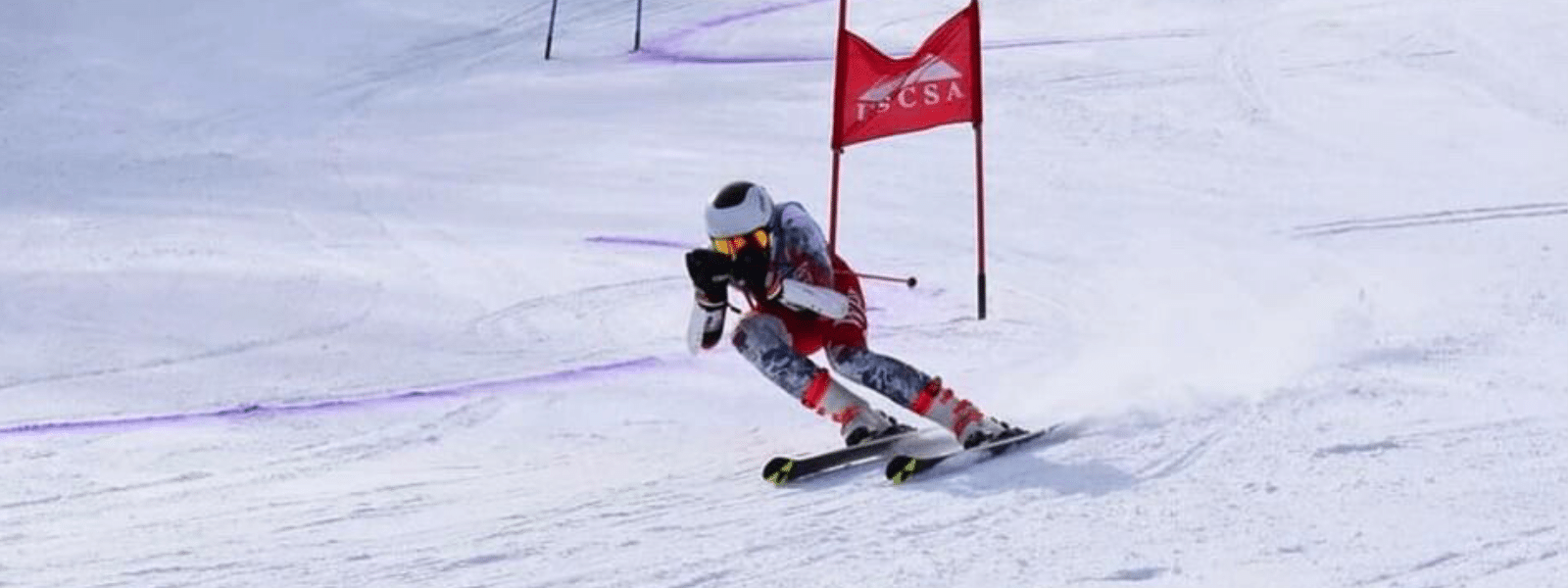Skiing Into the Unknown
Back in January of 2019, Erin Mielzynski got an email from Helly Hansen asking if she wanted to do some shooting with Warren Miller. The invite came as a bit of a surprise. The 29-year-old slalom skier grew up training on the icy slopes of Ontario, which eventually led her to represent Canada in three Olympics and become the first Canadian woman in 41 years to win a slalom race on the World Cup tour. When she pictured filming, she thought of Marcel Hirscher’s iconic shoot with Red Bull, having colored dye shoot from a slalom gates as he executed near perfect turns at high speed. But as her and the team got to talking, she realized the trip was to take place in the backcountry, an area of skiing that was completely foreign to her.
“I’ve never really skied powder, haven’t ski toured, haven’t really backcountry skied. I was totally honest with them and they just kept saying ‘no, this is what we want. We want you there with us,’” says Mielzynski. “And so throughout the season, I started trying to get skis and skins, a beacon, probe. My skis and stuff met me in Chamonix and I had never used them.”

Mielzynski would be joined by fellow World Cup racer, Sweden’s Mattias Hargin, professional free skier/Warren Miller veteran, Marcus Caston, and two-time freeride World Champion Aurelien Ducroz at his home mountain, Chamonix. In total, four athletes, two guides, and three cameramen made up the crew that she would share her first turns in the backcountry with.
“It’s steep and it’s scary and gnarly, and has insane access to the most insane mountains. So, it’s definitely a little intimidating,” says Caston.
Hargin recently retired from the World Cup at the end of the 2018/19 season and had only ever been to Chamonix for a ski race. Caston was also new to the mountain, although he had had his sights set on skiing the legendary terrain for awhile.
Going into the trip, Hargin, Caston, Ducroz, and Mielzynski had only interacted briefly or not at all. And when it comes to executing these kinds of expeditions, trust is a key player. The stakes are high in the backcountry, one slip up can lead to disaster. Being able to rely on the knowledge and capabilities of the entire crew (the athletes, the guides, and the production team) is one of the most important elements to feeling safe and confident during a filming expedition. It’s quite a different experience than what a ski racer is used to, the mountain offers so many more variables that athlete’s don’t experience in a controlled training or race environment.

“When you’re racing, you have a long course, the slope, and you’re trying to ski as fast as possible. In the mountains you have to factor in all these other things, the snow conditions, the terrain, you have to start learning how to adapt to the mountain and take all of these different aspects in to be able to enjoy and ski the mountains,” explains Hargin. “I was a little bit, not afraid, but nervous before I came to Chamonix when I didn’t really know the group and the athletes and also the guides. But when we met the group directly, I felt immediate trust.”
Hargin currently resides in Engelberg, Switzerland, and has extensive experience skiing in the backcountry. Mielzynski, on the other hand, had none. Her initial hesitation to join the expedition did not come from her lack of trust in her team. She knew that their experience and mentorship would be the thing that would carry her through peaks and lines of Chamonix safely. Her hesitation stemmed from her fear, feeling as if she was the weakest link, and that she would slow the rest of the crew down. When she felt the fear rise up, she had to trust herself and trust her skiing. Even if Mielzynski felt uncomfortable about her knowledge base, her background in ski racing was crucial to her ability to succeed.

“For me being out of place on a pair of skis just isn’t super normal because I’ve skied since I was two. Even though the backcountry is completely different I kept reminding myself, ‘this is skiing, the down is going to be the fun part.’ Or I had to trust that I could get myself out of tough situations,” says Mielzynski. “I think it was also trying to learn how to deal with fear, learn how to talk to people and a lot of that I’ve learned from being on a team and standing in a start gate. A lot of my ski racing came into play, and probably my ski racing gave me the courage to say yes.”
The rest of the team was more than aware of her lack of specific experience but wanted her there anyway. They trusted her ability to learn, adapt, and persevere despite her fear, and knew that she was more than capable of skiing the steep, scary, terrain that has made Chamonix a notorious freeski destination.
“Even if she felt uncomfortable and had never done it before, she still made it look amazing. She’s a great skier, clearly, obviously,” Caston says with a chuckle. “To see somebody who has dedicated their life to skiing, like Erin, get to have this experience free skiing for the first time was probably the coolest thing about the trip for me. She got so excited about these things that I would take for granted.”

Caston was once a racer himself. He grew up training at Snowbird, which meant he wasn’t just lapping the course, running gates. A “training” run for him and his buddies included skiing bumps, maneuvering trees, finding little chutes, and hitting jumps in the terrain park on their way to the top of the course. He never saw himself as just a ski racer, he saw himself as a skier. Ski racing gave him the fundamentals, but freeskiing added tools to his repertoire that he would need to become a better skier, both in and out the course. It kept the sport fun.
“As a skier with a background in racing, you can see it in certain areas of Marcus’ skiing,” says Hargin. “I think it’s pretty cool to see racers going out in the backcountry, how you see them ski, it’s a bit different. Especially with Marcus, it’s pretty cool, because he’s a really good skier with perfect technique with the turns. Racing is a really good background, one of the best for going out in the backcountry. ”
Hargin and Mielzynski felt honored to work with Caston, who has made quite the name for himself in the skiing community. Meanwhile, Caston was in complete awe of Hargin and Mielzynski’s ability, and humbled that they looked to him for advice and guidance during their expedition. In his eyes, they were the true experts, having taken a lifetime of training to perfect their art in racing. Watching them apply their expertise to the big mountain was one of the highlights of his trip. Especially Mielzynski, who saw the entire experience with a fresh set of eyes. Her willingness to get after it, and consistent excitement to experience the unknown allowed Caston to see his craft in from a new perspective, and he hopes that she had a similar experience.

“Talking to her about her World Cup experience and her struggles mentally, you know which every athlete has, I think this added perspective to what she’s doing because in ski racing it’s so easy to get tunnel vision,” says Caston. “In ski racing, there are so many variables that are out of your control. Inevitably, even if you’re the best racer in the world, you’re going to have a bad day, or bad days, or bad weeks. And if you think that racing is the only thing in the world, then I think you can put way too much pressure on yourself and perform even worse. I think this trip just added perspective, like oh wait, there’s more to skiing than just racing.”
This newfound perspective was not lost on Mielzynski. Once she felt stable on three pillars of trust, trust in her gear, trust in her team, and trust in herself, the backcountry was no longer this scary, unknown entity of skiing that she had only watched in ski films. The backcountry became a playground, an opportunity to experience the sport she loved in a completely different way.
“Now when I’m on a chair lift I’m not only thinking about my race run, I’m kind of looking at if a line goes or if I think it would be safe to ski with avalanche danger. And now I take my touring stuff on ski trips and if it gets a little too heavy I can just go for a little walk outside by myself or with my team and it offers a sense of freedom. I love skiing, but it kind of rekindled that love because I got to experience skiing in such a different way and in a different community too,” says Mielzynski.
A Swede, an American, and a Canadian, who all have roots in the sport of ski racing, all came together from different points in the world, and in their skiing career, to enjoy the mountains in a way that was somewhat new and unknown to all of them prior to meeting at the Argentiere Hut in the Chamonix range. But that’s the beauty of the sport. Those who are willing to push themselves, to get uncomfortable, and find new ways to trust and rely on others, have the capacity to do things they never thought they were capable of.
“You think about it in different ways, from someone current, someone retired, and someone who took their passion for skiing in a different direction, the joy that racing has but also the joy that you can find in the backcountry. It’s pretty special to realize it’s just this utter love for skiing, it connects all people,” says Mielzynski. Skiing can connect so many different people from so many walks of life, and that’s really what I felt. We all just kind of connected through ski racing to meet on a big mountain level and it all was just for the love of skiing.”





















